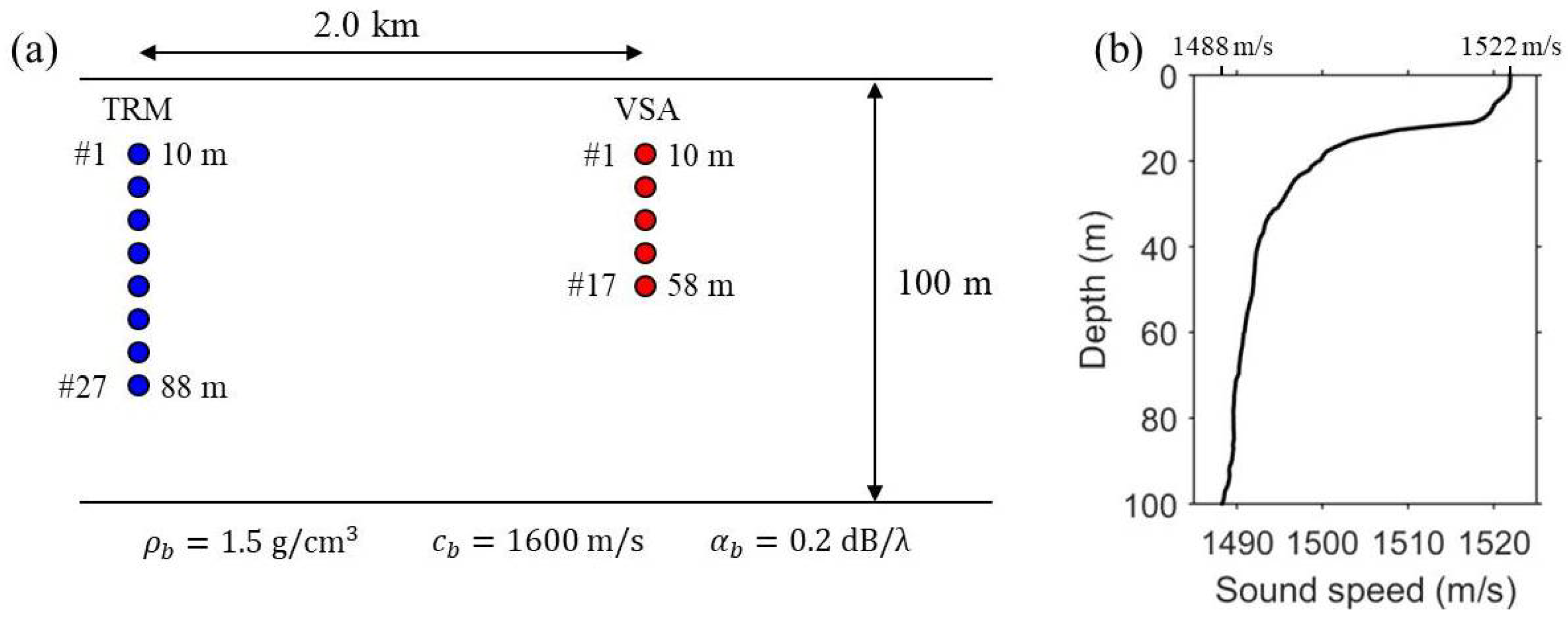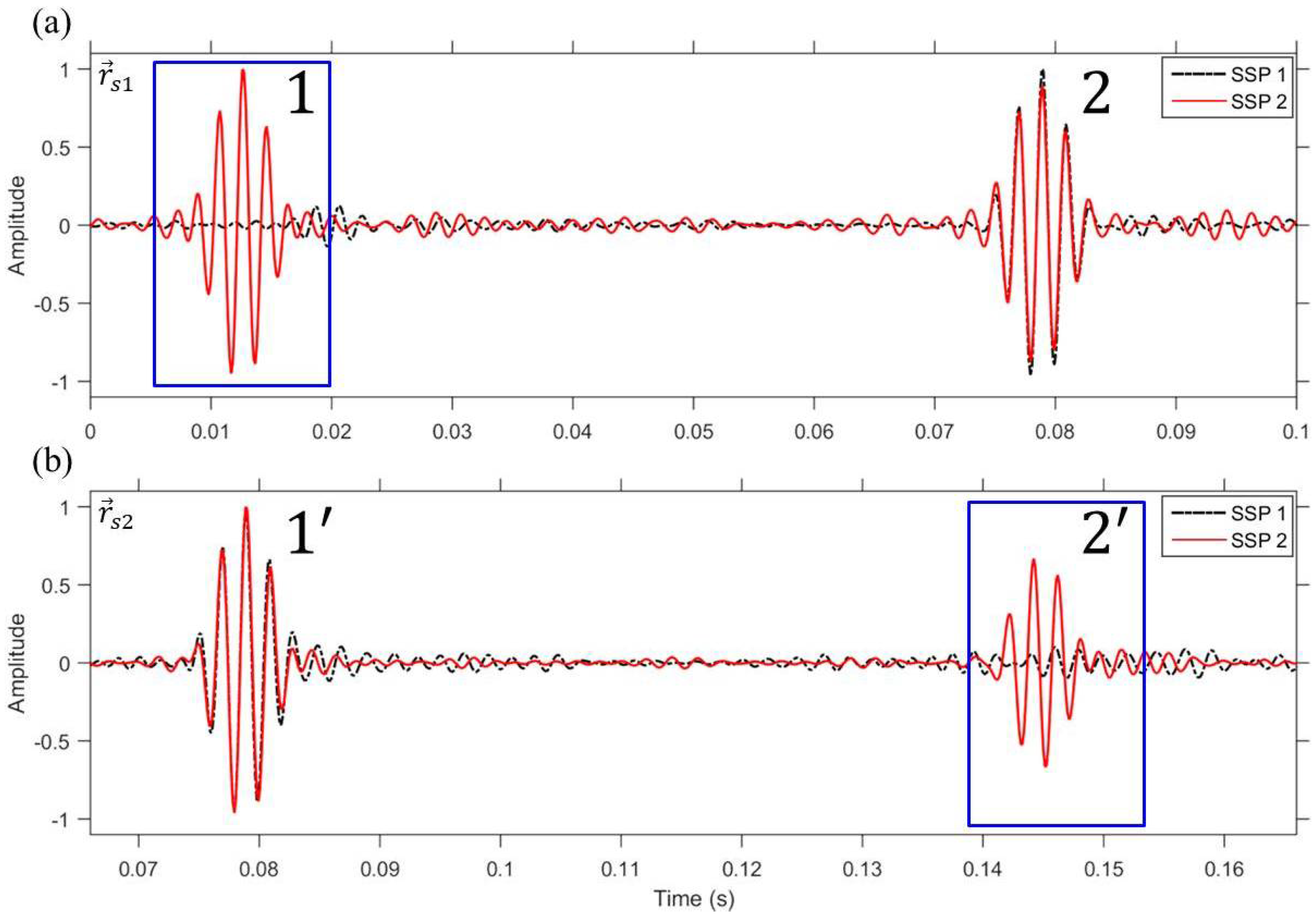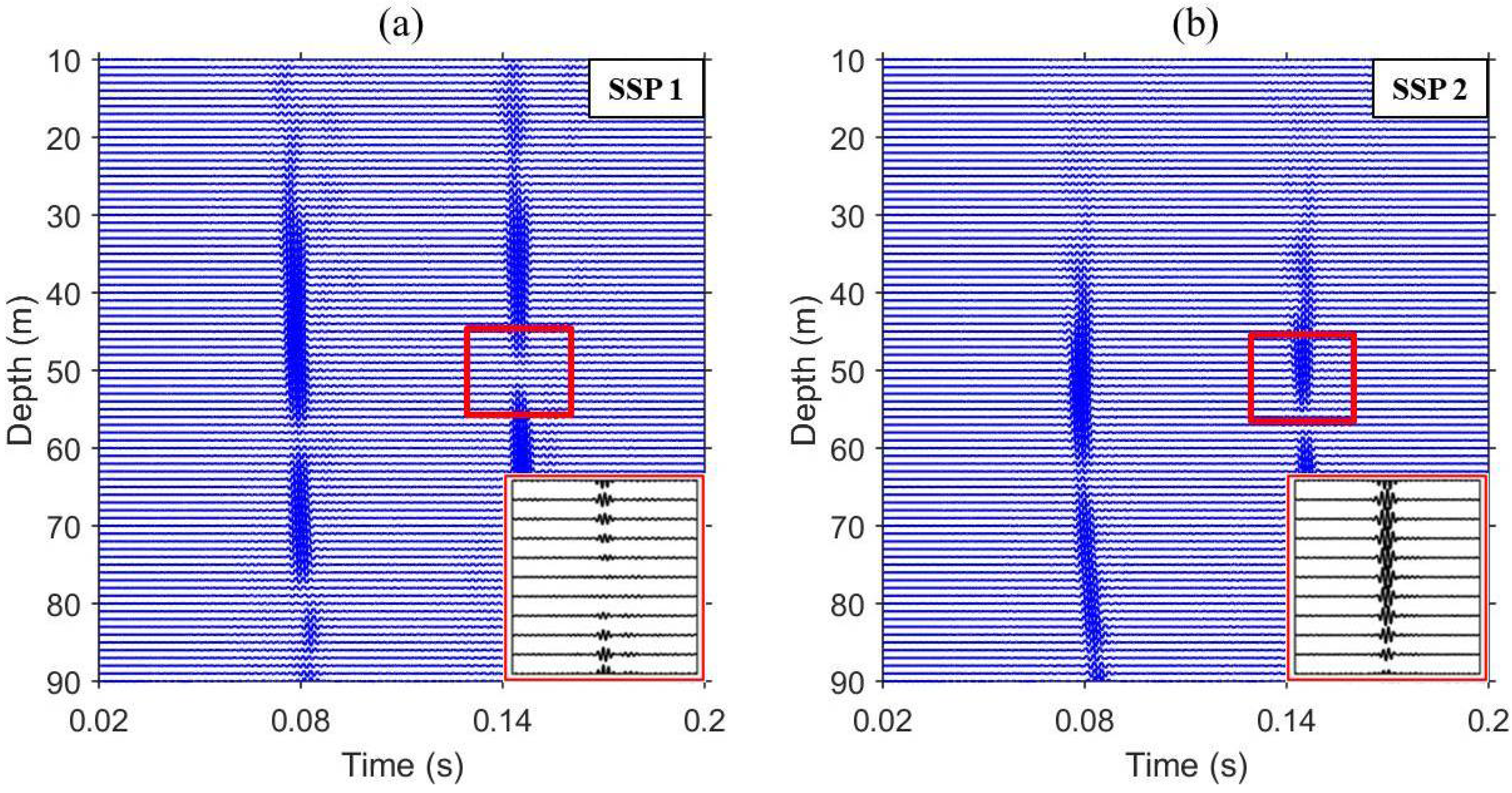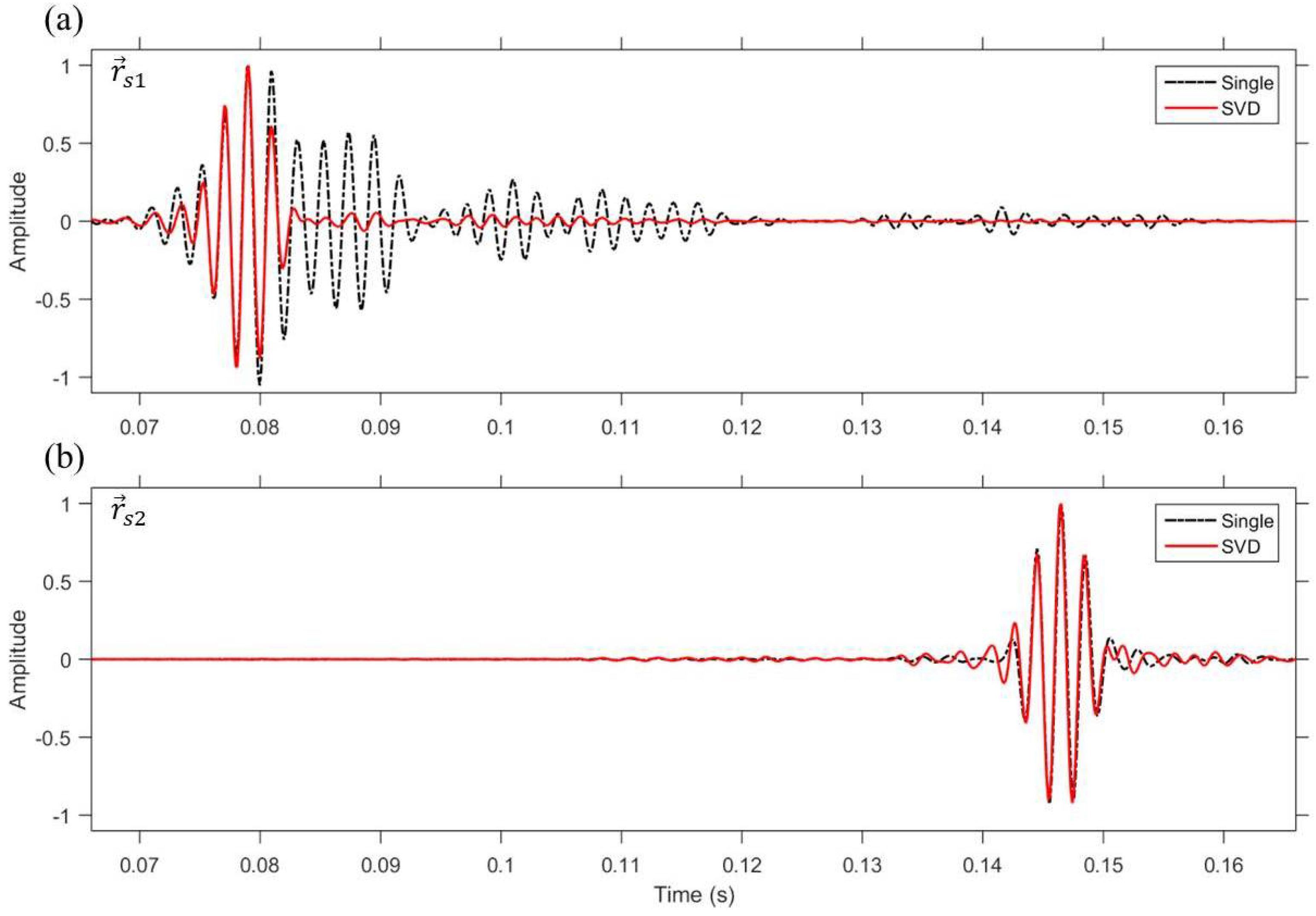Virtual Source Array-Based Multiple Time-Reversal Focusing
Abstract
:1. Introduction
2. Review of VSA-Based TR Focusing
3. Adaptive VSA-Based Multiple TR Focusing
4. Simulations in Waveguide
4.1. Superposition Method
4.2. Adaptive VSA
5. Robust VSA-Based Multiple TR Focusing
6. Summary
Acknowledgments
Author Contributions
Conflicts of Interest
Abbreviations
| TR | Time reversal |
| TRM | Time-reversal mirror |
| VSA | Virtual source array |
| MCM | Multiple constraints method |
| SVD | Singular value decomposition |
| ATRM | Adaptive time-reversal mirror |
| MFP | Matched-field processing |
| SSP | Sound speed profile |
| PS | Probe source |
References
- Fink, M. Time reversed acoustics. Phys. Today 1997, 50, 34–40. [Google Scholar] [CrossRef]
- Kuperman, W.A.; Hodgkiss, W.S.; Song, H.C.; Akal, T.; Ferla, C.; Jackson, D.R. Phase conjugation in the ocean: Experimental demonstration of an acoustic time reversal mirror. J. Acoust. Soc. Am. 1998, 103, 25–40. [Google Scholar] [CrossRef]
- Hodgkiss, W.S.; Song, H.C.; Kuperman, W.A.; Akal, T.; Ferla, C.; Jackson, D.R. A long-range and variable focus phase-conjugation experiment in shallow water. J. Acoust. Soc. Am. 1999, 105, 1597–1604. [Google Scholar] [CrossRef]
- Kim, J.S.; Song, H.C.; Kuperman, W.A. Adaptive time-reversal mirror. J. Acoust. Soc. Am. 2001, 109, 1817–1825. [Google Scholar]
- Song, H.C.; Kim, J.S.; Hodgkiss, W.S.; Joo, J.H. Crosstalk mitigation using adaptive time reversal. J. Acoust. Soc. Am. 2010, 127, EL19–EL22. [Google Scholar] [CrossRef] [PubMed]
- Kim, J.S.; Shin, K.C. Multiple focusing with adaptive time-reversal mirror. J. Acoust. Soc. Am. 2004, 115, 600–606. [Google Scholar] [CrossRef] [PubMed]
- Kim, S.; Kuperman, W.A.; Hodgkiss, W.S.; Song, H.C.; Edelmann, G.F.; Akal, T. Robust time reversal focusing in the ocean. J. Acoust. Soc. Am. 2003, 114, 145–157. [Google Scholar] [CrossRef] [PubMed]
- Walker, S.C.; Roux, P.; Kuperman, W.A. Synchronized time-reversal focusing with application to imaging from a distant virtual source array. J. Acoust. Soc. Am. 2009, 125, 3828–3834. [Google Scholar] [CrossRef] [PubMed]
- Schmidt, H.; Baggeroer, A.B.; Kuperman, W.A.; Scheer, E.K. Environmentally tolerant beamforming for high-resolution matched field processing: Deterministic mismatch. J. Acoust. Soc. Am. 1990, 88, 1851–1862. [Google Scholar] [CrossRef]
- Krolik, J.L. Matched-field minimum variance beamforming in a random ocean channel. J. Acoust. Soc. Am. 1992, 92, 1408–1419. [Google Scholar] [CrossRef]
- Yu, Z.; Zhao, H.; Gong, X.; Chapman, R. Time-Reversal Mirror-Virtual Source Array Method for Acoustic Imaging of Proud and Buried Targets. IEEE J. Ocean. Eng. 2016, 41, 382–394. [Google Scholar]
- Byun, G.; Kim, J.S. Robust variable range focusing with a virtual source array using the waveguide invariant in underwater. J. Acoust. Soc. Korean 2017, 36, 23–29. (In Korean) [Google Scholar] [CrossRef]
- Takao, K.; Fujita, H.; Nishi, T. An adaptive arrays under directional constraint. IEEE Trans. Antennas Propag. 1976, 24, 662–669. [Google Scholar] [CrossRef]
- Porter, M.B. The Acoustic Toolbox. Available online: http://oalib.hlsresearch.com/Modes/AcousticsToolbox/ (accessed on 25 October 2017).









© 2018 by the authors. Licensee MDPI, Basel, Switzerland. This article is an open access article distributed under the terms and conditions of the Creative Commons Attribution (CC BY) license (http://creativecommons.org/licenses/by/4.0/).
Share and Cite
Byun, G.; Song, H.; Kim, J. Virtual Source Array-Based Multiple Time-Reversal Focusing. Appl. Sci. 2018, 8, 99. https://doi.org/10.3390/app8010099
Byun G, Song H, Kim J. Virtual Source Array-Based Multiple Time-Reversal Focusing. Applied Sciences. 2018; 8(1):99. https://doi.org/10.3390/app8010099
Chicago/Turabian StyleByun, Gihoon, Heechun Song, and Jeasoo Kim. 2018. "Virtual Source Array-Based Multiple Time-Reversal Focusing" Applied Sciences 8, no. 1: 99. https://doi.org/10.3390/app8010099



